Ethics in GIS
GIS has potential to have drastic impact on peoples lives.
What is Ethics
A branch of philosophy that deals with the nature of right and wrong. Theory and standards that inform one’s moral practice.
- Ethics and legality are not synonymous
- Laws society has constructed may be informed by ethics
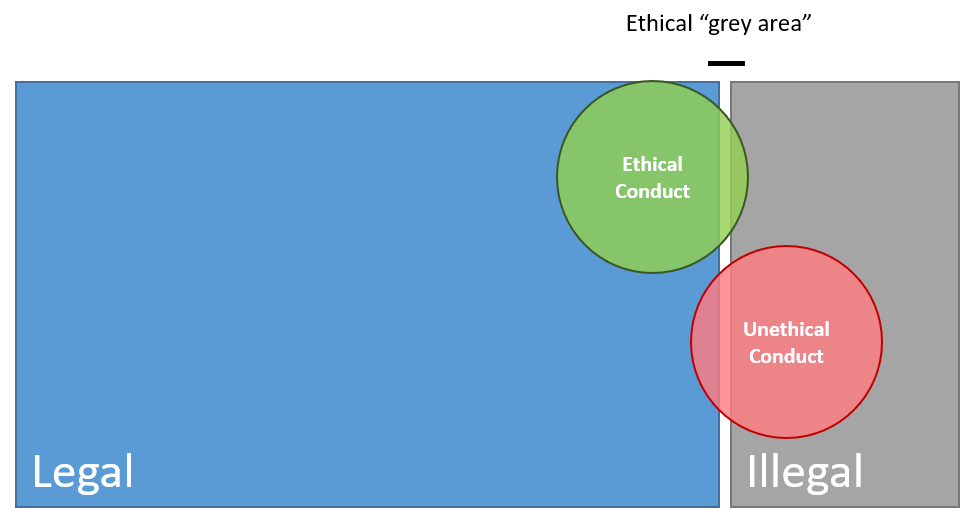
Ethics vs. Legality

Legal but Unethical
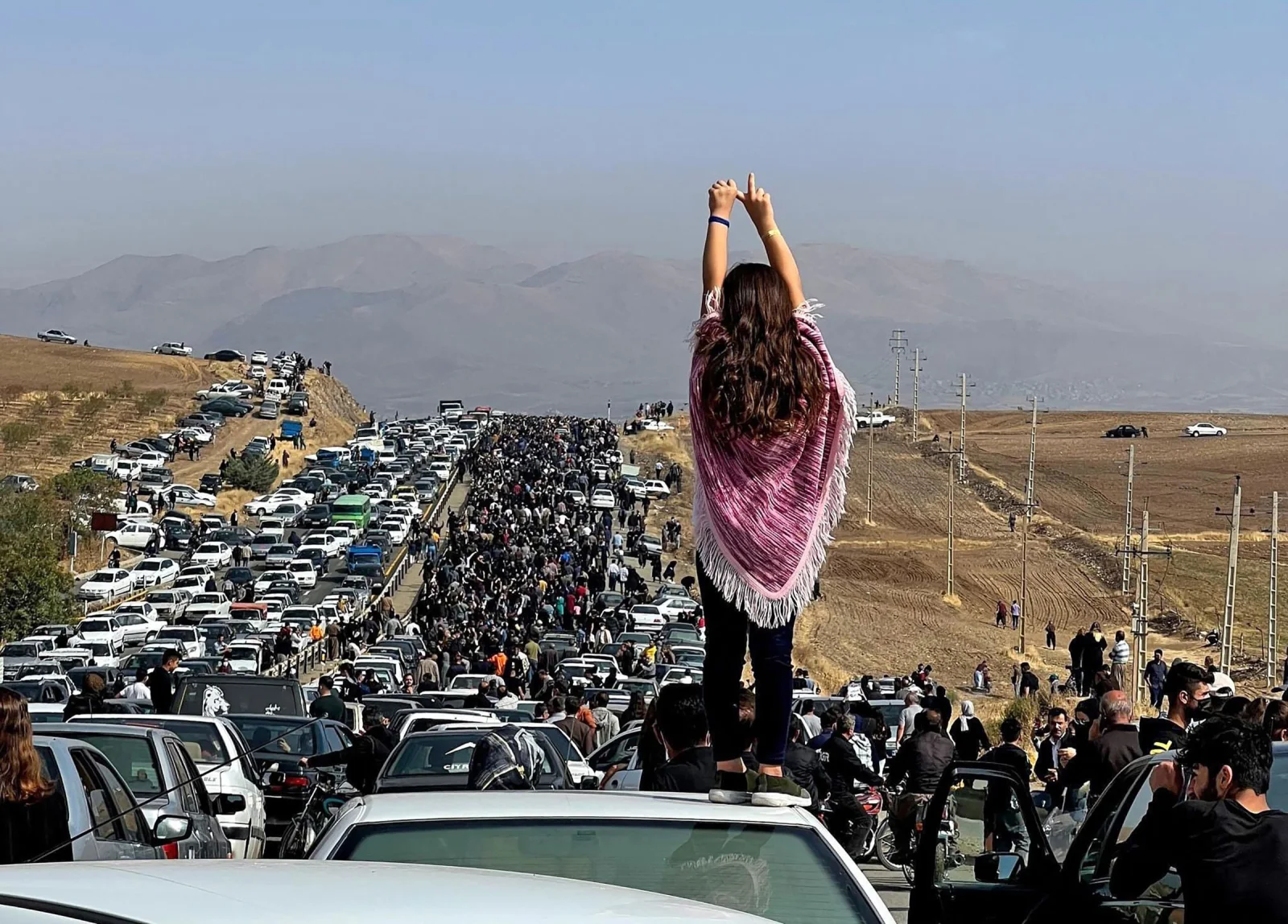
Ethical but Illegal
TopHat Question 1
This branch of philosophy deals with the nature of right and wrong:
- Logic
- Ethics
- Epistemology
- Metaphysics
Ethics in Science
Research often involves handling the sensitive information:
- Information will be used in a safe and respectful way
- In some fields, ethics boards review research proposals to ensure best practices are used
- How will the data be used?
- Who will have access to data/results?
- What identifying information will be used/released?
Data Privacy and Security
Higher resolution data = more accurate representation of the phenomena.
Allows for better decision making but infringes on privacy
How specific is too specific?
- Point locations risk exposing personal information
Data Privacy and Security
Organizations have guidelines surrounding exposure of information.
- Public health agencies don’t release information about individuals
- Stats Canada masks census blocks with low response rates
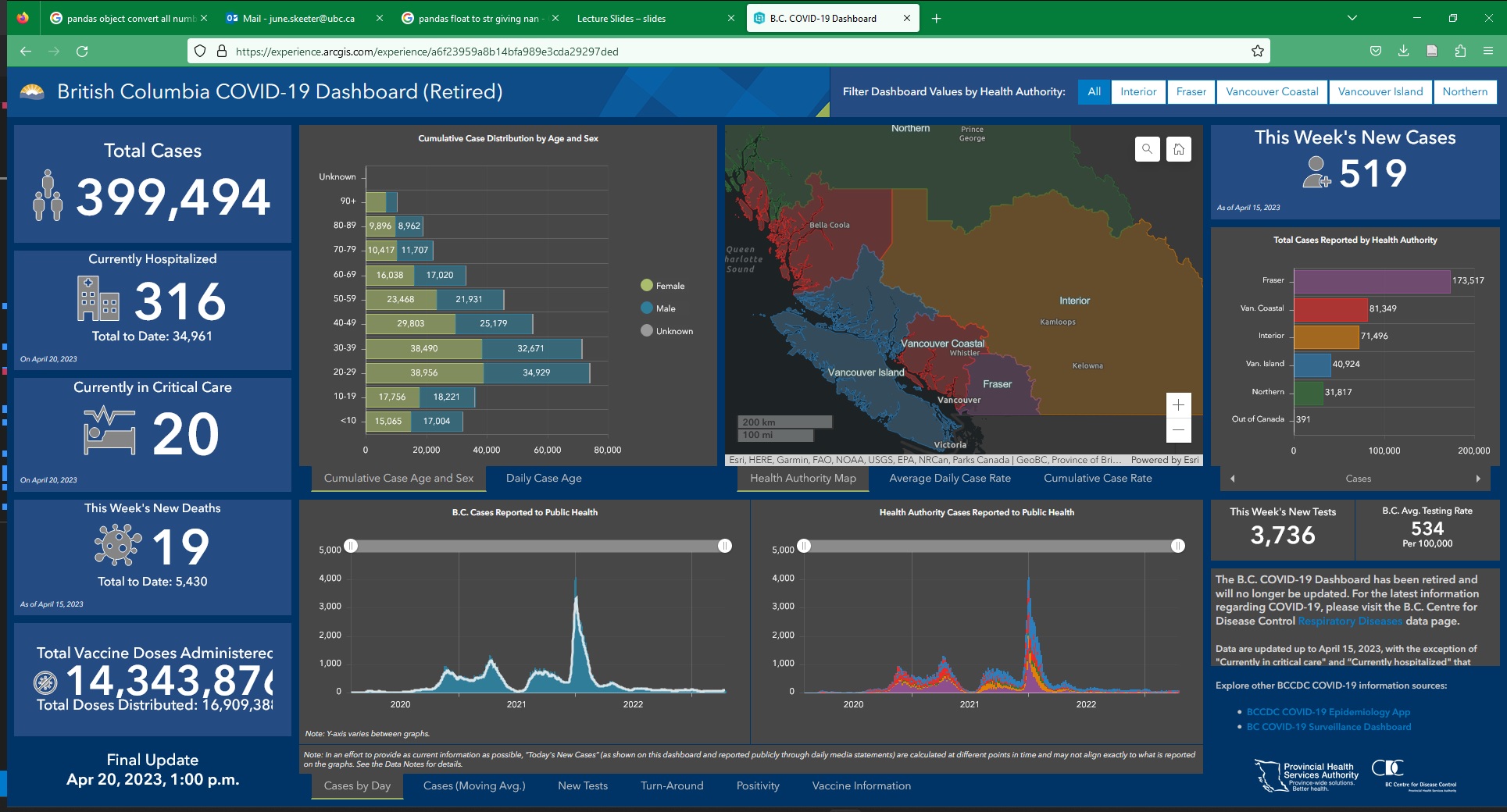
The Power of a Line
What side of a border you live up on can have drastic impacts on outcomes. Where you live determines:
- What rights you have
- What schools you attend
- How much your vote matters (if you even get to vote)
- How much you pay in taxes
- What services you have access too
- Where you can travel
The Power of a Line
Borders are often arbitrary and modifiable.
- Think back to the modifiable areal unit problem
- The decisions of a few can impact many

Redlining
The systematic denial of services to marginalized groups by governments and banks used it to segregate communities
- Direct impact on transfer of inter-generational wealth
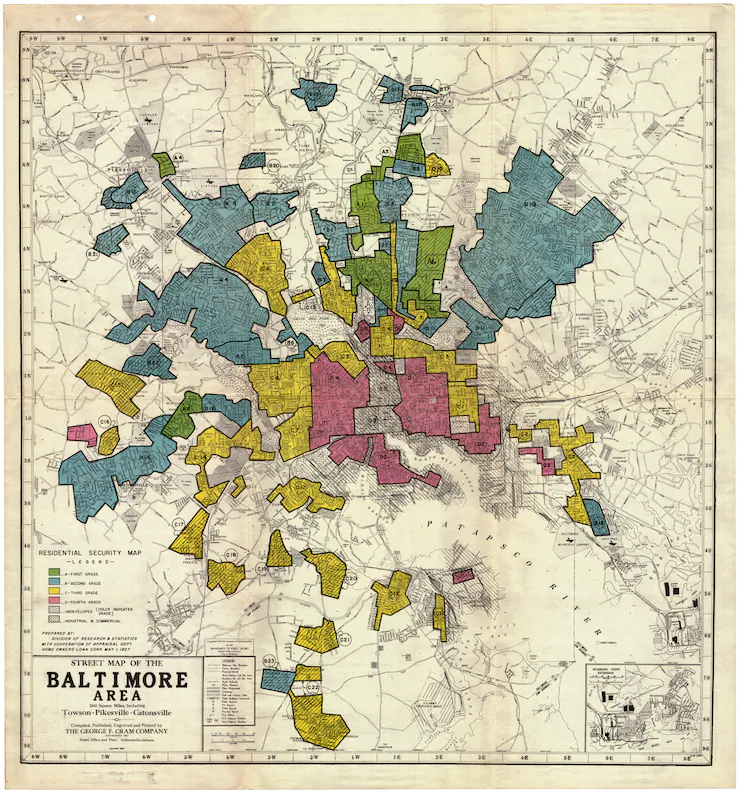
Redlining
For much of the 20th century, redlining was legal and wide spread across North American cities.
- More researched in the US
- Important to note it occurred in Canada as well
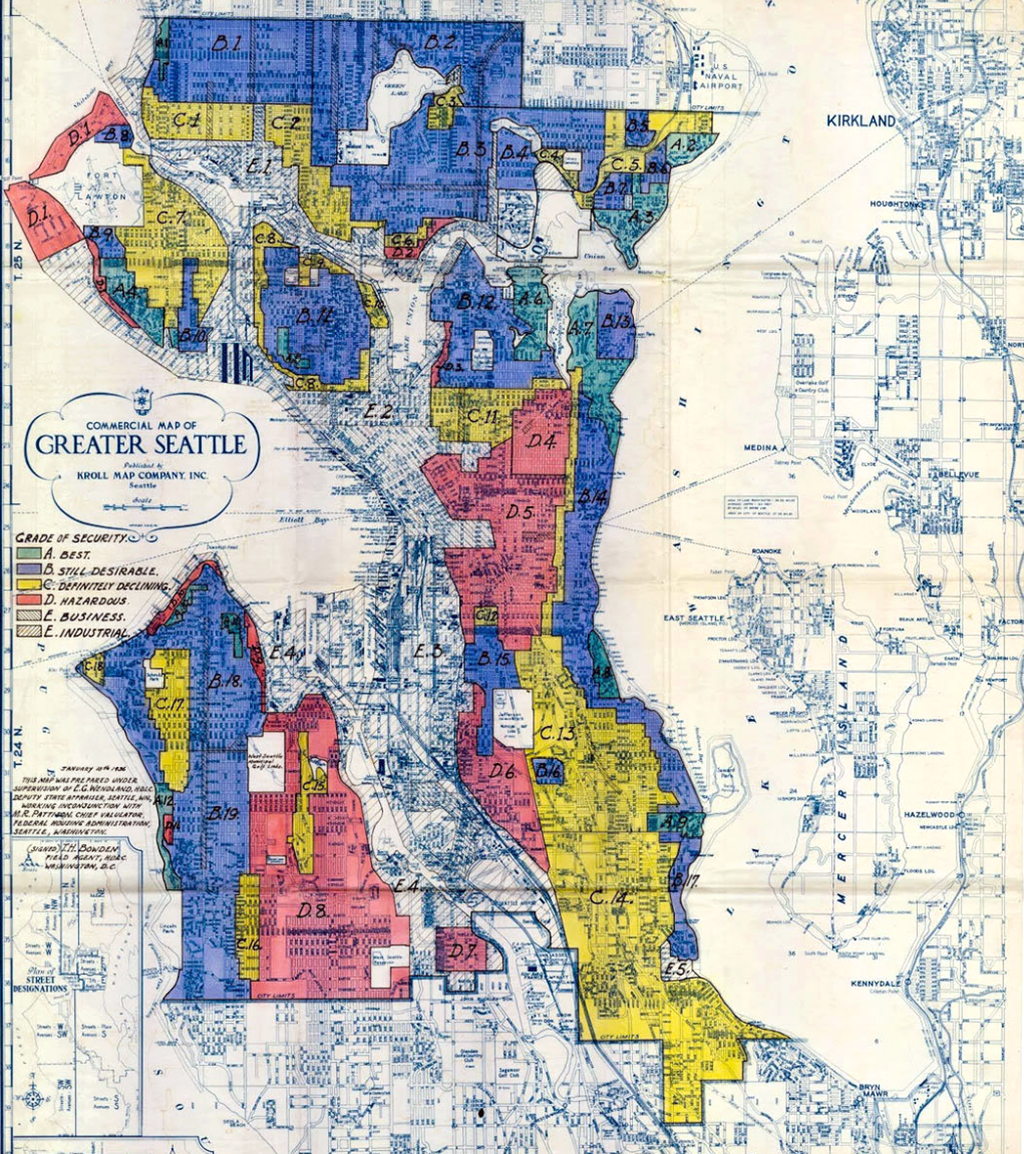
TopHat Question 2
The modifiable areal unit problem is a serious issue. Instead of voters choosing their politicians, it allows politicians to choose their ______.
Data Representation
Every cartographic choice can have ramifications.
- How we display data impacts how it is perceived
- Maps influence the way people think
- They can reinforce (or counter) biases
- All maps lie, but some lie more than others.
- Abstraction is a necessary part of map making
- But it needs to be done carefully
All Maps Lie
Sometimes the lies are intentional.
- Maps can be crafted to sway public opinion and influence political outcomes
- This is a serious ethical issue
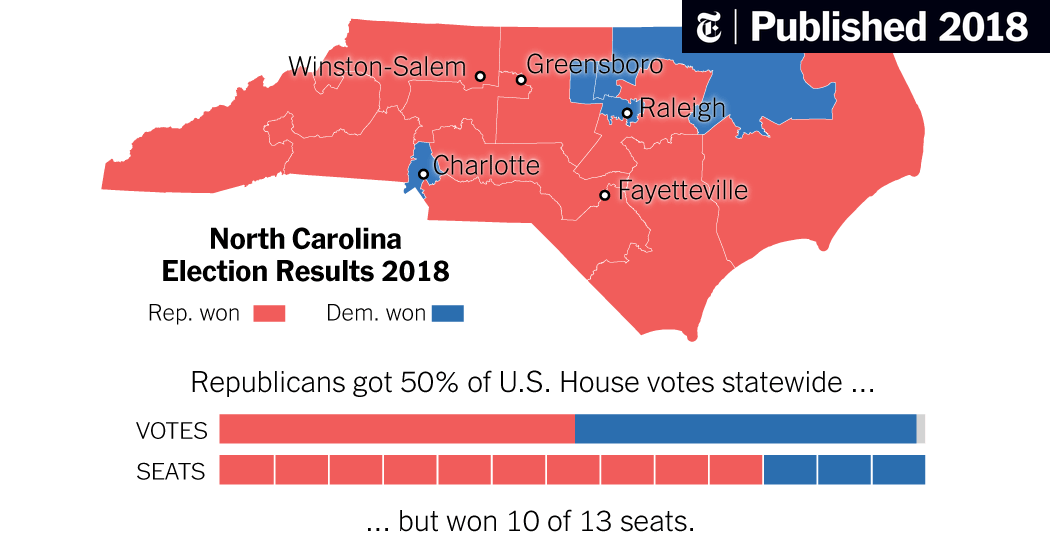
All Maps Lie
Sometimes the lies are careless oversights.
- Different projections cause areas to be different sizes
- May intention of the map maker
- Nonetheless it will influence the way people think

All Maps Lie
Sometimes the lack of context is the issue.
- Map over-represents republican votes
- It may not be an intentional choice
- Nonetheless it influences the way people think
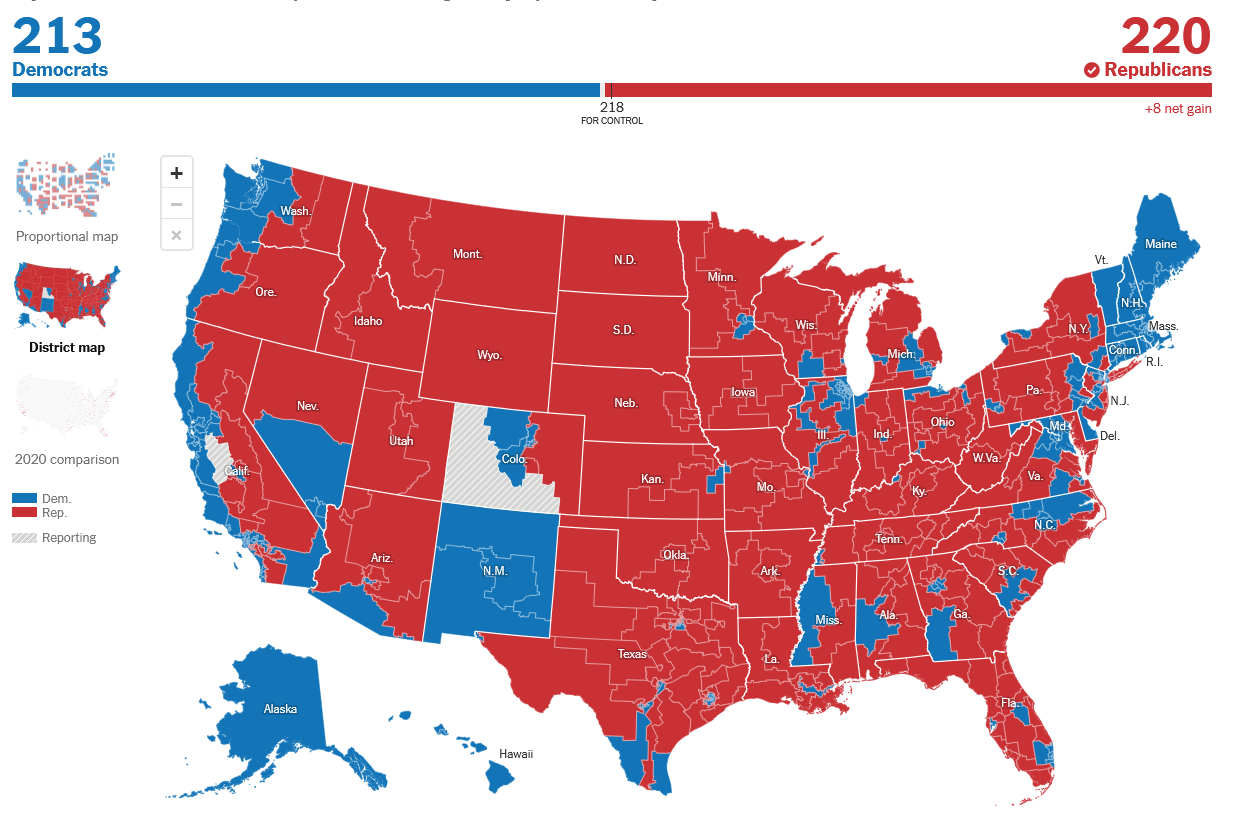
US House of Representatives 2022 Election
All Maps Lie
There are strategies to correct these issues
- Adjust the map area to give more context

US House of Representatives 2022 Election with Equally Sized Districts
All Maps Lie
There are strategies to correct these issues
- Adjust the map area to give more context
- Cartograms: Sacrifice spatial accuracy to emphasize other attributes

Who Has Access to GIS?
Many GIS products (e.g. ArcGIS Pro) have expensive licensing fees.
- Beyond just the cost of the software:
- Hardware to run GIS is not always accessible
- Training takes time.
- Options to make GIS more accessible to the public
- But they can only go so far
Open Source GIS
Free to access; created and maintain by volunteers. There are open source alternatives for GIS:
QGIS is an application with similar functionality to ArcGIS Pro.
Python, R, JavaScript etc. are open source programming languages that have many GIS packages
Sites like stackexchange and docs pages (eg qgis)
- They require a base level of knowledge first
TopHat Question 3
Open source software and documentation make GIS more
- Profitable
- Accessible
- Difficult
Public Participation in GIS
There are many ways the public can be involved in GIS; the can participate actively or passively.
- Public engagement is crucial way to increase representation of opinions and trust in institutions
- Not all participatory approaches are centered on engagement
- They can also be passive
Volunteer Geographic Information
The collection, processing, assembly, and dissemination of geographic data provided voluntarily.
- Usually some sort of “wisdom of the crowds” is used to validate data, or else data verification and validation is performed by the organizing group
- Equally likely to be used for commercial purposes:
- E.g. Trip Advisor, Flickr, Twitter, etc.
Citizen Science
Allows interested volunteers and researchers to team up to address some scientific question.
- Volunteers provide the “leg work” of data collection, data cleaning, and initial interpretation of field data; guided by scientific research experts
- Participation levels can range from simple data collection through to contributing to academic journal submission.
- The COCORAHS platform is a great example!
Participatory GIS
Prioritizes empowerment and inclusion of marginalized people.
- Members of a community generate their own data
- People share their data and combine into a community map/database
- Coded into a GIS to systematize the knowledge and allow for spatial analysis
- Emphasizes engagement throughout the GIS process
Inuit Land Use and Occupancy
Participatory GIS to safeguard Inuit rights to Arctic lands and waters.
- Inuit People became increasingly concerned about resource extraction projects
- Commissioned a study on land use and occupancy that was instrumental in the establishment of Nunavut

Inuit Land Use and Occupancy
No references to published work or other secondary sources of information:
- Existing maps and information had significant colonial bias
- 100 % Original Data collection from Inuit Sources
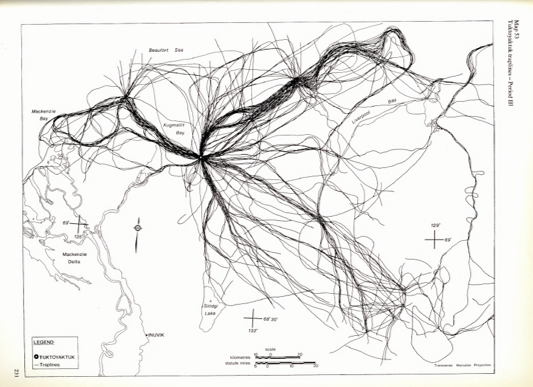
Positionality
Reflect on your relation to your work: a researcher’s privileges, biases, and preconceptions can impact the communities they are work with and the results they produce.
- In the “hard” sciences, there is often a claim of total objectivity, but total objectivity is impossible
- No one can be 100% objective
- Must be acknowledged regardless of the field
Positionality
Some important questions to ask yourself, and points you may want to disclose depending on the context.
- Who am I and where do I come from?
- What is my relationship to the community/field I am working in?
- What are my motivations for this work?
- What biases may I have and how may my past experiences influence how I engage with this work?
TopHat Question 4
This is the concept of reflecting on your relation to your work, what your motivations are, and what biases you might have.
- Objectivity
- Positionality
- GIS Ethics
- Cartography